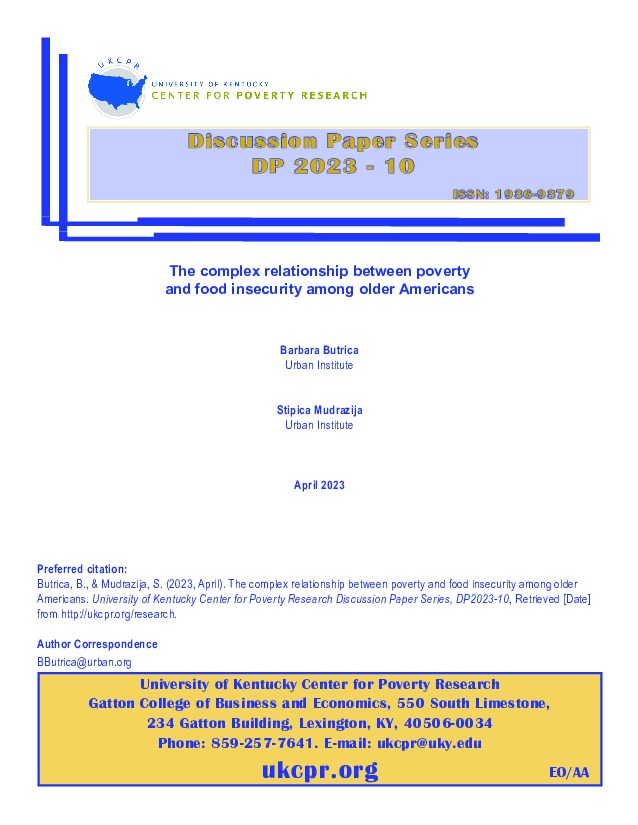This paper examines the characteristics associated with poverty and food insecurity among households ages 55 and older to better understand what drives the gap between these measures of hardship. The analysis uses data from the 2002 through 2018 Health and Retirement Study to assign households one of four outcomes: poor and food insecure, poor and food secure, nonpoor and food insecure, and nonpoor and food secure. Multinomial logit regressions of the likelihood that households will fall into one of these four outcomes show that poor health is associated with an increased likelihood that both poor and non-poor households will be food insecure, and a reduced likelihood that households will be nonpoor and food secure. These results highlight the strong correlation between food insecurity and health that goes beyond sociodemographic and economic factors. This information is important for policymakers, Federal agencies, such as the U.S. Department of Agriculture Food and Nutrition Service, nonprofits, food banks, and other community-based organizations that serve food insecure households.
Research
SeniorsPDF Thumbnail
